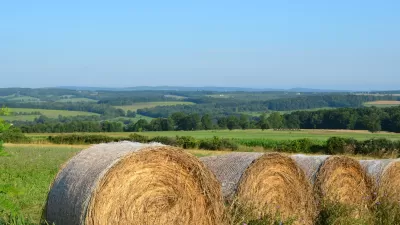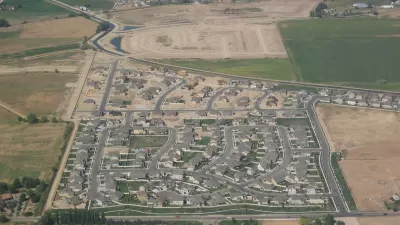An easement often grants a third party, mainly a utility company, limited rights to properties not belonging to them. In North Fork, Colorado, conservation easements do the opposite by preserving the "heaven here on earth," says Kathy Browning.
Many utility companies use eminent domain and easements to run power lines and cable lines in certain areas even if the landowners oppose them. In Colorado, "The word easement doesn't actually mean what we think it does. Most people think of an easement as a right of passage, and in fact it is a right of passage through time for land to stay intact," Susan Lohr said. Conservation easements provide communities with scenic open space by preserving the natural environment.
Even with a Conservation Assistance Program (CAP), there is still a chance your land may be taken away. "An easement doesn't eliminate the potential for eminent domain by the government, but they would have to compensate the family. This is rare and usually it's for a strip of land to widen a highway," says Kathy Browning. Conservation easements also keep land values steady because the land cannot be developed on.
"Over 70 easements have been placed in the North Fork Valley by CAP. That amounts to 8,300 acres that will be preserved," says Kathy Browning.
FULL STORY: Conservation Easements Preserve What We love About the North Fork

Planetizen Federal Action Tracker
A weekly monitor of how Trump’s orders and actions are impacting planners and planning in America.

Chicago’s Ghost Rails
Just beneath the surface of the modern city lie the remnants of its expansive early 20th-century streetcar system.

San Antonio and Austin are Fusing Into one Massive Megaregion
The region spanning the two central Texas cities is growing fast, posing challenges for local infrastructure and water supplies.

Since Zion's Shuttles Went Electric “The Smog is Gone”
Visitors to Zion National Park can enjoy the canyon via the nation’s first fully electric park shuttle system.

Trump Distributing DOT Safety Funds at 1/10 Rate of Biden
Funds for Safe Streets and other transportation safety and equity programs are being held up by administrative reviews and conflicts with the Trump administration’s priorities.

German Cities Subsidize Taxis for Women Amid Wave of Violence
Free or low-cost taxi rides can help women navigate cities more safely, but critics say the programs don't address the root causes of violence against women.
Urban Design for Planners 1: Software Tools
This six-course series explores essential urban design concepts using open source software and equips planners with the tools they need to participate fully in the urban design process.
Planning for Universal Design
Learn the tools for implementing Universal Design in planning regulations.
planning NEXT
Appalachian Highlands Housing Partners
Mpact (founded as Rail~Volution)
City of Camden Redevelopment Agency
City of Astoria
City of Portland
City of Laramie





























